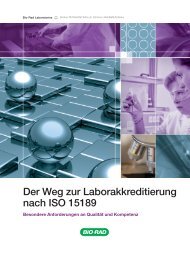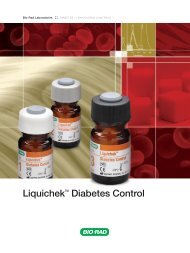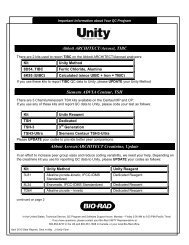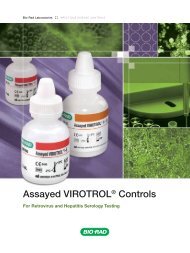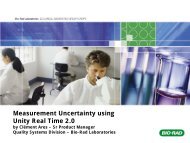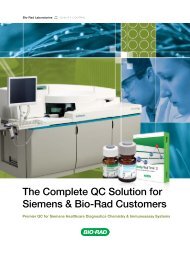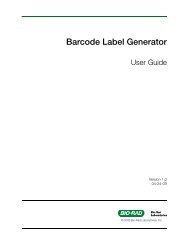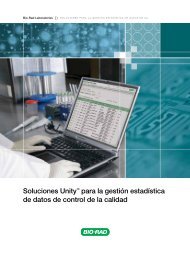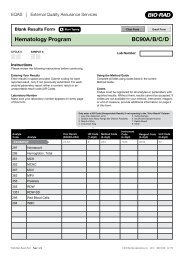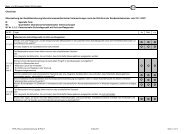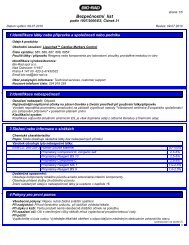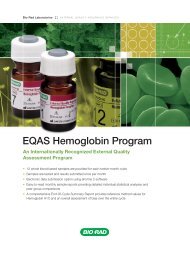EQAS Program User Guide - QCNet
EQAS Program User Guide - QCNet
EQAS Program User Guide - QCNet
You also want an ePaper? Increase the reach of your titles
YUMPU automatically turns print PDFs into web optimized ePapers that Google loves.
CHAPTER9GlossaryAlgorithm AThe robust mean and standard deviation (SD) algorithm described in ISO 13528, “Statistical methods for usein proficiency testing by interlaboratory comparisons.” This is the primary algorithm used in the <strong>EQAS</strong> <strong>Program</strong>to calculate (estimate) the robust mean and SD of each comparator.All ResultsOne of the consensus groups in the <strong>EQAS</strong> <strong>Program</strong>. “All Results” is a comparator that includes all usersreporting the same analyte for a specific <strong>EQAS</strong> sample. No differentiation is made between instruments,methods, or reagents. This comparator has the most data points, but is the least specific group ofcomparison for <strong>EQAS</strong> results. The All Results comparator is only provided for uni-modal analytes.Amended ResultA result sent to Bio-Rad after a sample close that replaces a previously reported result. An amended resultsubmitted by the laboratory is identified in the <strong>EQAS</strong> reports by an asterisk (*) next to the result. Amendedresults are compared to the dataset that was in place at the time the sample closed. These are not included inthe dataset until a recalculation at the end of a cycle to include all late and amended results.An amendment to a submitted result will be made as requested by the participant. Such amended results willbe flagged in your <strong>EQAS</strong> reports. Your laboratory should note the reason for the amended result in thecomment section of your <strong>EQAS</strong> report. Corrections made on Bio-Rad’s behalf (error in data entry) will becorrected and an amended result flag will not appear in your <strong>EQAS</strong> report for that result. The comparison willbe to the dataset that was in place at the time of sample close.AnalyteA substance or constituent for which the laboratory conducts testing.Arithmetic Mean (Non-Robust Mean)1 The sum of values divided by the number of values.2 The Bio-Rad <strong>EQAS</strong> <strong>Program</strong> uses this formula when a robust calculation of the comparator mean is notpossible.Bio-Rad Laboratories 97



